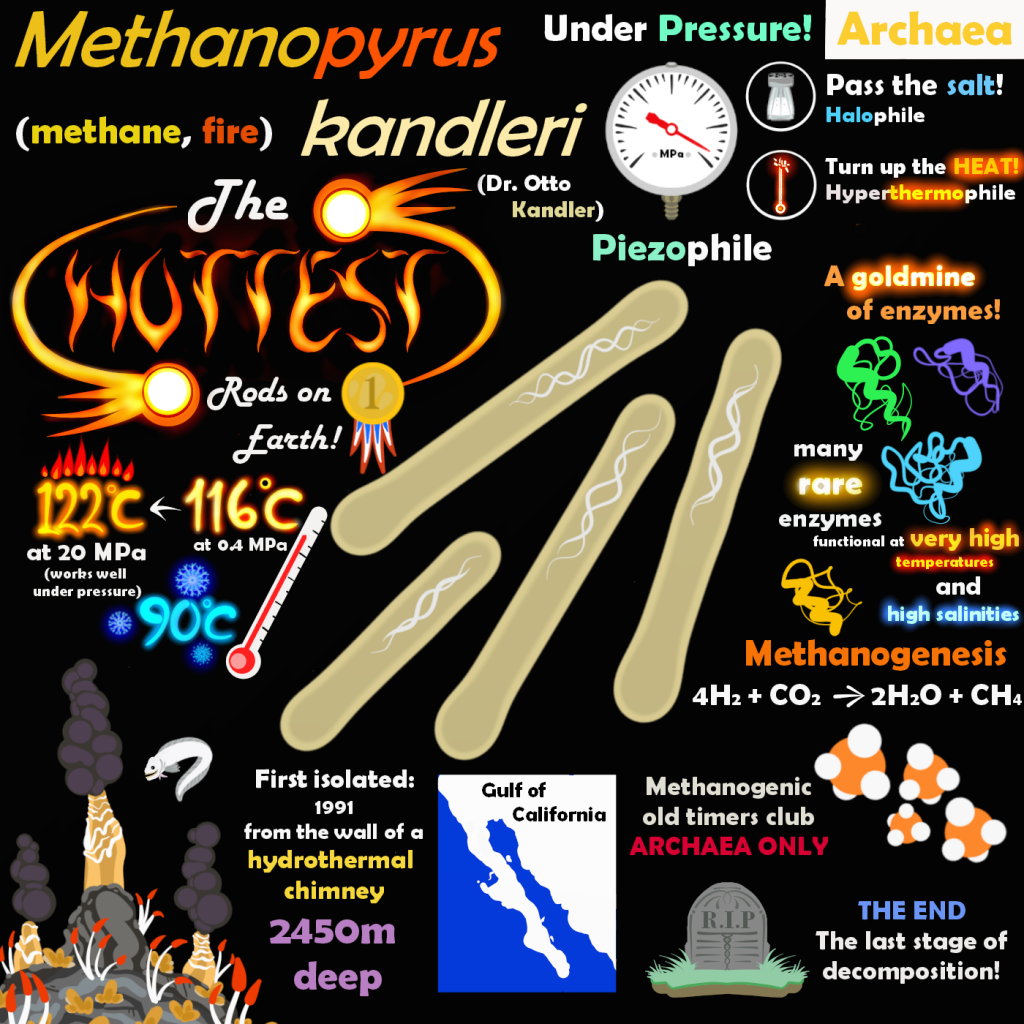
Microbe Monday: The Hottest Life on Earth!
It’s Microbe Monday!
Life doesn’t get much hotter than this! Today we’re looking at the current world champion hyperthermophile: Methanopyrus kandleri. But that’s not all – this rod-shape archaea is also halophile, meaning it can tolerate high salinities, and piezophile, which means it can withstand great hydrostatic pressures.
M. kandleri thrives in temperatures up to 116˚C at a pressure of 0.4MPa. Recent research has shown that this limit can be pushed if the pressure is increased! Pump it up to 20MPa and they can tolerate up to 122˚C!! Simply put, these tiny archaea can survive and thrive in both a pressure nearly 200 times that of the earth’s atmosphere, and a temperature beyond that of a boiling jug of water!
With the temperature and salinity observed in the depths of Brothers volcano, we may be able to isolate microbes related to M. kandleri!
These guys are members of the (so far) archaea-only methanogen club. Methanogenesis, or the bioproduction of methane, is the final step in biomass decomposition in anoxic environments – the end of the line for all that once lived!
Speaking of endings, this is our last Microbe Monday post for Exp. 376! We hope that these blogs have piqued your curiosity for the incredible little microbes that tough it out in some of the most extreme habitats on our planet. This series was a joint effort among the shipboard microbiologists and outreach officer Perry Hyde. We hope that you enjoyed these posts as much as we enjoyed preparing them!